- Home
- Ramachandra Guha
The Picador Book of Cricket Page 7
The Picador Book of Cricket Read online
Page 7
It was after this tour that one England cricketer, Greville Stevens, said that it was not until he had played with Wilfred that he realized how little he knew about the game. This great knowledge Rhodes would pass on to the young who were prepared to take pains. He instructed and guided and, although he would on occasions give measured encouragement, he did not indulge youth. Once, when a lad, I got him caught at the wicket off what I thought was rather a good ball. As he passed by he put the matter in proper perspective. ‘Can’t see ’em like I used to,’ he said. Never mind, I knocked Emmott Robinson’s castle down next ball, surely a right royal brace.
Wilfred Rhodes was certainly never a man to court popularity. He did and said what he thought was right, and he commanded immense respect. Perhaps because of this even his own side, being human, would occasionally enjoy the mishaps that cricket can bring to the most august, when they befell him. I was brought up on the tale of Frank Mann hitting him thrice into the upper regions of the Lord’s pavilion, to the ill-concealed glee of the fielders. Apparently the victim bore this affront, if without pleasure, at least without comment until his eye fell on Roy Kilner bent double with merriment at mid-off. It was too much. The bowler stopped in his run. ‘What the bludy ’ell are you laffing at?’ he demanded.
My last encounter with him on a cricket field was in somewhat similar circumstances, I desperately holding up an end at Bradford while Pat Hendren raced along at the other. Pat hit a couple of sixes into the football ground then, chasing down the wicket, slipped and fell yet got the bat to the ball. At the end of the over the great man collected his sweater and, for the moment, we stood together, separated from the rest of the field. He gave me a sinister smile. ‘You’re backing up a bit too soon, Mr Peebles,’ he said. ‘You don’t mind if we roon you out.’ It was only right that someone should be rebuked at that moment, and I felt rather proud that I should have been the only one available.
His humour had the same realistic ring as his general demeanour, penetrating but without cynicism. He was the first man I ever heard describe a benevolently contrived contest as ‘coostomer’s game’. I also liked his revealing tale of the visiting league pro sitting on the bench with his opposite number when assailed by a scruffy little dog. ‘Git away, tha’ dirty little rat,’ says the visitor. ‘Look out,’ says the host, ‘that’s president’s dog.’ ‘Eh – president’s dog,’ says the visitor. ‘’Ere – Spot, Spot, Spot.’
Now at ninety Wilfred Rhodes is completely blind and revered in every cricketing country. He is more loquacious than in days of yore, and wonderful company. I have said he was never one to court popularity. Yet he is an enormously popular man – for affection can readily grow from respect, even if the reverse is seldom true.
Next time we meet I shall ask him about railway engines.
⋆ ⋆ ⋆
All the major sports played by North Americans are of their own invention – baseball, basketball and American football. Oddly enough, the first international cricket match was played between the United States of America and Canada – in 1844, thirty-three years before the first England–Australia Test. Cricket was played here and there on that vast continent, but with most intensity and focus in the Anglophilic city of Philadelphia. It was in this city that, at the turn of the century, John Barton King made his bid to be recognized as one of the game’s greats. The case is well made by Ralph Barker in this celebration of the bowler and wit.
Incidentally, the old Quaker college of Haverford, located just outside Philadelphia, has one of the finest cricket libraries in the world. And the city still has a cricket league, although the teams are likely to be made up of West Indians, Indians and Pakistanis.
RALPH BARKER
The American Lillee (1970)
Cricket is not much of a game for shooting a line. The ‘first-baller’ and the ‘nought-for-plenty’ are always waiting round the corner. Even the most ebullient chatterer is usually silent for a time after dropping a catch. Yet confidence in one’s ability is perhaps the main requisite for success. ‘I’m fastest bowler in England,’ Freddie Trueman used to say, and because he believed it, he probably was. And it is this cocksure confidence which is the Yorkshireman’s strength and which makes him so feared an opponent. ‘Give me the ball,’ says the Yorkshire bowler, ‘and I’ll bowl the boogers out.’ And because he believes it, he probably will.
Whatever would happen if the Americans took up cricket as their national game? With their unshakeable belief in themselves and the American way of life, they would surely be unbeatable.
The Americans, of course, did play cricket – and a few of them still do. Seventy-five years ago, in the city of Philadelphia, a race of native American cricketers, whose ancestors had introduced cricket into America 200 years earlier, came to maturity and flourished for a brief but glorious span of twenty years. They had beautiful grounds, splendid pavilions and good wickets. The standard of their inter-club competition was not far below that of the English first-class game. They undertook five tours of England, including three major ones in 1897, 1903 and 1908, when they played many of the first-class counties, and they were visited by many touring sides, including Australian teams on their way home from England, whom they sometimes beat. They had many great players, batsmen and bowlers, at least half a dozen of whom would have been successful – indeed, were successful – in any company. And coinciding exactly with this great era was the career of the greatest of all American cricketers, one whose achievements may be said to demand a place for him among the immortals, John Barton King . . .
Bart King was born in Philadelphia on 19 October 1873, and as a boy his game was baseball. He had had no coaching as a cricketer when he played his first match for the Tioga juniors at the age of fifteen, in 1889. He was then played as a batsman. Tioga were one of the senior clubs who competed for the Halifax Cup, the cricket championship of Philadelphia, and King was chosen occasionally for the senior side. Because of his physique – he was nearly six feet tall and still growing – he was soon tried as a bowler in junior matches, and he showed such promise that he was urged to practise and to develop this side of his game. The result was that in junior cricket that year he took 37 wickets at an average of 2.40. He bowled just above medium pace at this time, with an orthodox action.
In common with many other young Americans, King had learned to put swerve on the ball when pitching at baseball. The simplest form of baseball swerve was the ‘roundhouse’ which was pitched with an action and grip similar to the off break in cricket, but which, when thrown with a bent elbow, curved outwards all the way. But such a uniform curve was not very effective, and all the best baseball pitchers discarded it and developed a delivery which stored up its swerve until the last fifteen feet of flight. This they knew as the ‘hook’, because it travelled straight for most of its flight and then curved in late in the form of a hook. To achieve such a swerve when throwing was, King knew, comparatively easy, but to produce it with a legitimate bowling action at cricket was another matter.
For his first two or three seasons with Tioga, King developed his pace until by the time he was eighteen he was genuinely fast. And it wasn’t until he found genuine pace that he discovered that he could sometimes make the ball swerve. The fact that he was swerving was pointed out to him by the Tioga wicketkeeper, and King, realizing from his knowledge of baseball that if he could produce this swerve at will he would have a formidable weapon, began to analyse his methods and, in cooperation with the wicketkeeper, to try to isolate the characteristics that seemed to accompany swerve . . .
Every major American club at this time had its pair or more of swing bowlers, so it was not difficult for King to learn as he went along. Yet these bowlers admitted that curving the ball, although undoubtedly a science, remained something of a mystery and was not always effective. King determined to develop a method which was effective always, and before the end of his career he was able to declare that he could make even an old ball swing to some extent under all condit
ions. He could, at least, always swing the ball in. Because of his long arm and supple body he was able to bowl the inswinger from a point so far overhead that his hand and wrist were actually over his left shoulder, with the seam pointing roughly from mid-off to long leg: thus he approached the trajectory of a left-arm bowler bowling round the wicket, slanting the ball in with the arm.
King believed in those early days that the ball that curved outwards was of less value than the inswinger; yet he bowled both. He bowled the outswinger with a lower arm, but he found that it tended to lose pace off the pitch, and he used it mainly for variation.
This was the bowler who emerged as a permanent member of the Tioga senior eleven in the summer of 1892 – tall, strong, self-confident, fast, accurate and with a late swerve that soon began to take batsmen by surprise. He was not yet, perhaps, quite the powerful, compact figure that he became in his twenties, and he still retained something of the untidy angularity of youth, but with his long, bounding run up to the wicket, the ball gripped in both hands high above the head in the manner of the baseball pitcher in the final stride, he was a terrifying sight to batsmen. At the end of that wild gyration of arms there was a beautifully smooth shoulder and body swing as the ball was delivered at a great pace.
King’s bowling for Tioga that year earned him his first chances in representative cricket; he played in the annual match for the United States against Canada, and he played for the Gentlemen of Philadelphia against the Gentlemen of Ireland, who were the tourists that year. Against Canada he made a successful start, taking 3 for 6 and 2 for 15, and in three representative matches against the Gentlemen of Ireland he was the leading American bowler, taking 19 wickets at an average of 13.53. He was still under nineteen.
In the following year, 1893, the Australians visited Philadelphia on their way home from their English tour that summer. They were a strong all-round side, but they were stale after an arduous tour, and they unwisely agreed to play a representative match against the full strength of Philadelphia the day after landing from a rough crossing of the Atlantic. But – the full strength of Philadelphia! What did that amount to? Australian teams had stopped at Philadelphia before, and although they had had one or two surprises, they knew that the opposition was not strong. Representative Philadelphian sides had toured England, it was true, but their standard had not been above club level, and it had been against the clubs and teams of amateurs that they had played. An Australian Test-match eleven could be in no possible danger.
The ground at Elmwood, Philadelphia, seemed small to the Australians; the leg boundary on one side was especially short. The grass at this time of year – September – was coarser than in midsummer, but the wicket looked good. The Philadelphians won the toss and batted first; and the Australians soon realized their mistake. The ground seemed to them to roll like the deck of the liner on which they had so recently crossed the Atlantic. In the circumstances they were glad they were in the field, but they dropped numerous catches, seemed unable to devise a plan to cope with the short boundary and allowed the Philadelphians to run up the huge total of 525. King, not yet recognized as a batsman, went in last and made 36. The Australian bowling was completely collared, and for long periods the only hope of a wicket seemed to be a run-out; three of the Americans were in fact dismissed in this way. The leading Australian bowlers, George Giffen and Hugh Trumble, took, respectively, 0 for 114 and 2 for 104!
By the time the Australians’ turn came to bat, it was expected that they would have recovered from their ocean crossing. But they now encountered another problem in the swerve bowling of Bart King, so that they felt they were back in the middle of the Atlantic. They were all out for 199, and King took 5 for 78, his victims including Bannerman, Giffen, Harry Trott, and W. Bruce, who had topped the Australian Test-match averages in England that year. Following on, the Australians were all out a second time for 258, so the Gentlemen of Philadelphia, as their team was always styled, had won by an innings and 68 runs. It was a result that created a major sensation throughout the cricket world, and indeed it was astonishing that a single American city could turn out a side capable of beating the full strength of Australia.
The Australians won the return match by 6 wickets, and many people were inclined to shrug off the first result as a freak. But not Blackham, the Australian captain. ‘You have better players here’, he told the Philadelphians, ‘than we have been led to believe. They class with England’s best and reflect great credit on your country. With some improvement, you should soon be able to beat England at her own game.’ . . .
It was in the 1896 season that King moved to Belmont, which was to remain his club for the next seventeen seasons, and for whom his greatest performances in American cricket were to be achieved. And it was in 1896 that he won the Childs Bowling Cup, the premier award for bowling in American cricket, for the first time.
Then, in 1897, came the first major tour of England. Exciting as the prospect was to Philadelphian cricketers, who believed that it would be the finest possible way of improving and publicizing their cricket, it aroused little general interest in America. ‘Cricket has never been popular here as a field sport,’ said the New York Herald in an editorial wishing the team luck just before it sailed. ‘It is too slow for the average American, but Philadelphians like it.’ The American temperament, it seemed, was better suited to the individual and personal clash involved in tennis or golf. These two games, indeed, were getting a strong hold even in Philadelphia, and all the leading cricket clubs were becoming social clubs where all three games could be played. Philadelphians hoped, however, that their successes on the cricket field would encourage young Americans to take up the game. The Philadelphian tour, which was to be of two months’ duration and to include fifteen first-class matches, began modestly. Their games did not attract the crowds, and few people were inclined to take them seriously as cricketers. The Americans play cricket? Not against the first-class counties, surely. It was not until the Sussex match at Brighton on 17 June that the Philadelphians established themselves on the English cricket scene. Sussex fielded a strong side – a compliment that was not paid by some of the other counties – and the Philadelphians, batting first, made 216, thanks largely to a fourth-wicket stand of 109 between King and the best of the American batsmen, J. A. Lester. Then, in less than an hour, and on a perfect wicket, Sussex were bowled out for 46. A strong breeze was blowing across the ground, and King, choosing the end where the wind came over his left shoulder, bowled 10 overs, 5 maidens, and took 7 Sussex wickets for 13. He clean bowled Ranji first ball, and he also clean bowled Murdoch and Vine. Ranji afterwards described how King’s bowling seemed to spring at him from the wicket, and the ball that bowled him in this innings swung so late as to be unplayable.
Sussex followed on, and this time they scored 252, Ranjitsinhji getting 74, by which time the respect between batsman and bowler was mutual. Indeed King admitted that when Ranji got going he had no idea how to bowl to him. ‘One ball may be pitched up and hit for four between cover point and extra cover, and the next, pitching in exactly the same place, may go for four between square and fine leg.’ But Ranji’s innings could not save Sussex, and the Philadelphians won by 8 wickets.
King on this tour was genuinely fast, and an indication of this came in a telegram that was sent on 5 July by the touring side to the committee in Philadelphia, asking for another wicketkeeper to be sent ‘as Mr Ralston’s hands are quite used up’. A replacement sailed two days later.
Another fine Philadelphian victory was against Warwickshire in the ninth match of the tour. Warwickshire made 296 (King 5 for 95) and 201 (King 7 for 72). The Philadelphians made 269 in their first innings, 27 runs behind, and then, after being set 229 to win, they got them for five wickets, King making 46 not out.
Like all bowlers, King had days when nothing would go right for him, when the ball wouldn’t swing and when batsmen became established and he couldn’t break through. One such instance on this tour was in the match against
Gloucestershire at Bristol. King beat W. G. Grace before he had scored, but Grace got an inside edge and the ball streaked through for four: Grace made no further mistake and went on to get a hundred. Jessop followed and did the same, and Gloucester made 363. King’s figures, though, did him credit – 36 overs, 7 maidens, 2 for 100.
Nothing impressed English cricketers so much as the manner in which the Philadelphians played their cricket. Cricket in Philadelphia was played because the men who took part in it loved it for itself and not because of any public demand; thus it was purely amateur. In addition, the Americans were so obviously determined to learn and to improve their cricket: their zest and enthusiasm were refreshing, and they played the game in the best possible spirit. On one occasion, for instance, against Somerset, when the wicket was dangerous, King was taken off. The Bath wicket had its terrors even then. ‘They have made friends everywhere,’ said the magazine Cricket, adding, apparently in some astonishment, ‘and not a single word has been said in their disfavour; there has been no necessity for it.’
On this tour King averaged 20 with the bat, finishing fifth in the Philadelphian averages, and in the fifteen matches he bowled 655.4 overs and took 72 wickets at an average of 24.02. These were good figures in a side in which he was called upon to bowl for long periods and in which the standard of catching was not high.
Long before the end of the tour, several counties were casting covetous eyes on Bart King. He was a splendid and colourful all-rounder, deadly serious about his cricket and yet full of personality, and he received several offers to stay in England to play in county cricket. To observe the niceties, these offers were generally made through intermediaries, and as no one imagined that King would play as a professional, other inducements had to be offered. A prominent member of one county, notoriously thin in fast bowling, asked whether King would be likely to consider an offer of what he termed ‘a cricket clerkship’, under which his financial status would be assured outside the game. Several such ‘clerkships’, however, had already been offered and rejected, so the county’s intermediary was obliged to produce his trump card.

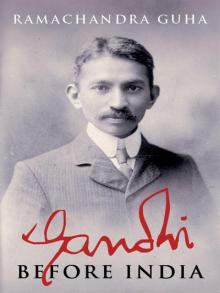 Gandhi Before India
Gandhi Before India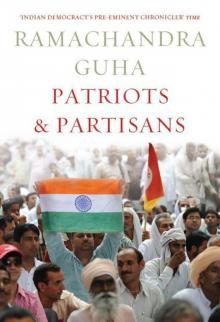 Patriots & Partisans
Patriots & Partisans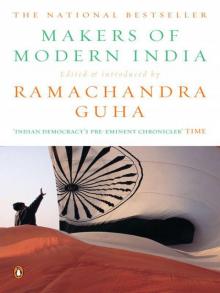 Makers of Modern India
Makers of Modern India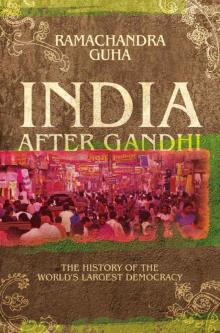 India After Gandhi: The History of the World's Largest Democracy
India After Gandhi: The History of the World's Largest Democracy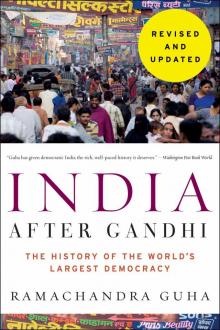 India After Gandhi Revised and Updated Edition
India After Gandhi Revised and Updated Edition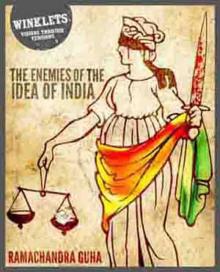 The Enemies of the Idea of India
The Enemies of the Idea of India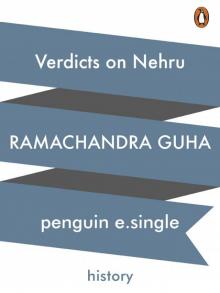 Verdicts on Nehru
Verdicts on Nehru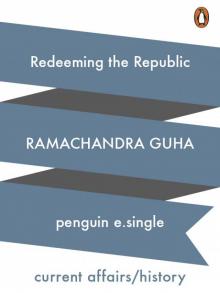 Redeeming the Republic
Redeeming the Republic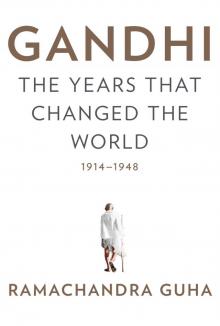 Gandhi
Gandhi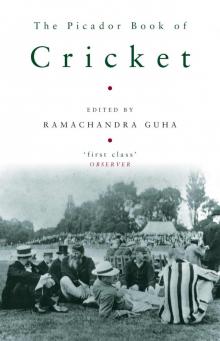 The Picador Book of Cricket
The Picador Book of Cricket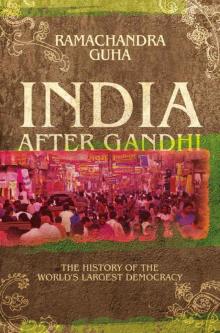 India After Gandhi
India After Gandhi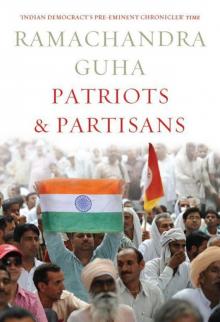 Patriots and Partisans: From Nehru to Hindutva and Beyond
Patriots and Partisans: From Nehru to Hindutva and Beyond